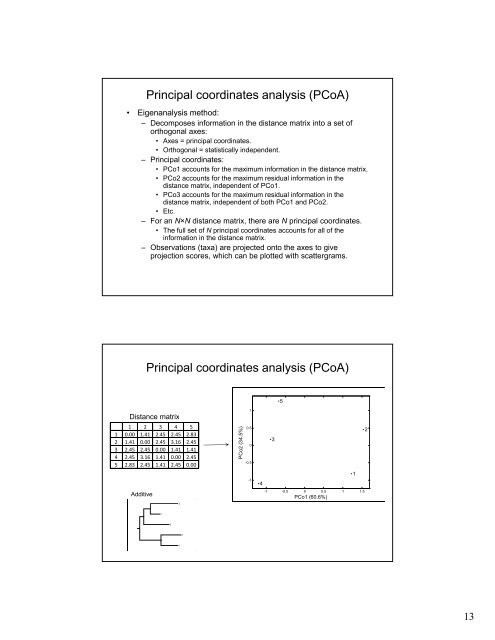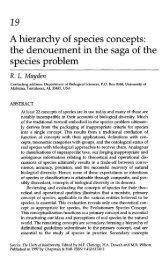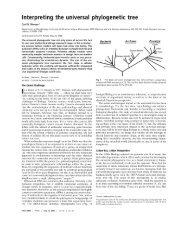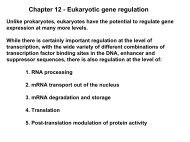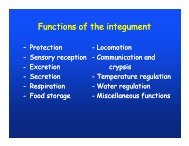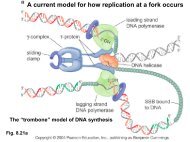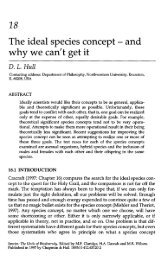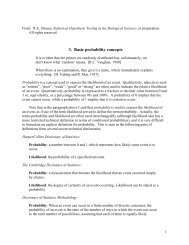Additive vs ultrametric: triangle inequality Additive vs ultrametric ...
Additive vs ultrametric: triangle inequality Additive vs ultrametric ...
Additive vs ultrametric: triangle inequality Additive vs ultrametric ...
Create successful ePaper yourself
Turn your PDF publications into a flip-book with our unique Google optimized e-Paper software.
Principal coordinates analysis (PCoA)<br />
• Eigenanalysis method:<br />
– Decomposes information in the distance matrix into a set of<br />
orthogonal axes:<br />
• Axes = principal coordinates.<br />
• Orthogonal = statistically independent.<br />
– Principal coordinates:<br />
• PCo1 accounts for the maximum information in the distance matrix.<br />
• PCo2 accounts for the maximum residual information in the<br />
distance matrix, independent of PCo1.<br />
• PCo3 accounts for the maximum residual information in the<br />
distance matrix, independent of both PCo1 and PCo2.<br />
• Etc.<br />
– For an N×N distance dsta matrix, ,there eeae are N principal pa coordinates.<br />
• The full set of N principal coordinates accounts for all of the<br />
information in the distance matrix.<br />
– Observations (taxa) are projected onto the axes to give<br />
projection scores, which can be plotted with scattergrams.<br />
Principal coordinates analysis (PCoA)<br />
5<br />
Distance matrix<br />
1 2 3 4 5<br />
1 0.00 1.41 2.45 2.45 2.83<br />
2 1.41 0.00 2.45 3.16 2.45<br />
3 2.45 2.45 0.00 1.41 1.41<br />
4 2.45 3.16 1.41 0.00 2.45<br />
5 2.83 2.45 1.41 2.45 0.00<br />
<strong>Additive</strong><br />
4<br />
PCo2 (34.5%)<br />
1<br />
0.5<br />
0<br />
-0.5<br />
-1<br />
4<br />
3<br />
-1 -0.5 0 0.5 1 1.5<br />
PCo1 (60.6%)<br />
1<br />
2<br />
3<br />
5<br />
2<br />
1<br />
13


